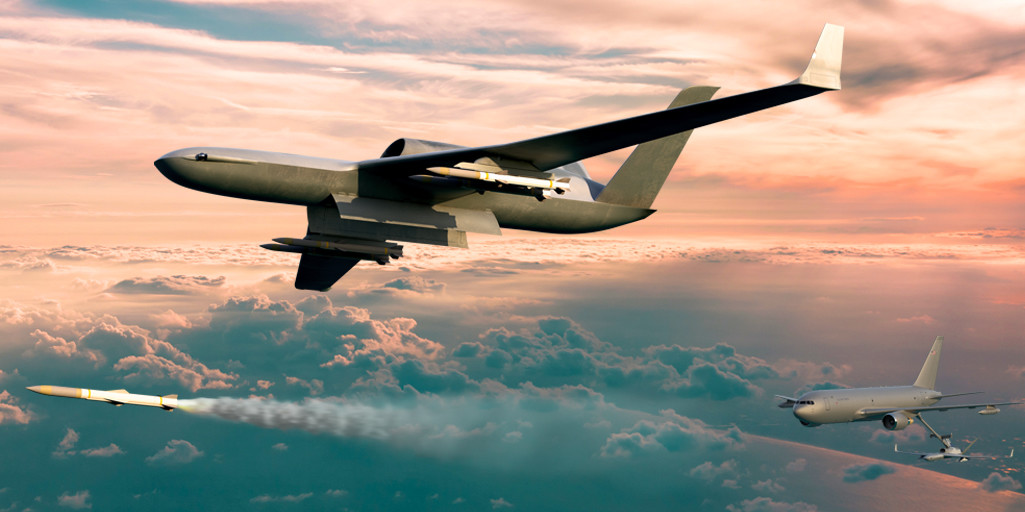GA-ASI Defender Concept
General Atomics ASI first tweeted the concept of its Defender drone (shown above) on February 28, 2020 saying that the drone would be capable of protecting USAF high value airborne assets (HVAA) in a contested environment.
Protecting its HVAA has become a high priority quest of the USAF with its adversaries - Russia and China - improving the range and end game maneuverability of their air-to-air missiles and acquiring targeting capabilities to effectively leverage the increased range.
The GA concept depicts a Defender concept drone launching a compact missile from its internal weapons bay. The drone is also armed with four AIM-120 Advanced Medium-Range Air-to-Air Missiles (AMRAAM) externally, two on each under-wing pylon. Another Defender is seen refueling via the boom on a KC-46A Pegasus tanker.
Aerodynamically, the Defender appears to have been designed for high endurance, aerial refueling, and cruise speed typical of HAVAAs that it will protect, such as tankers, AEW&C and strategic reconnaissance aircraft. The Defender could even serve as a loyal wingman defender for strategic bombers.
Interestingly, the Defender features a LO airframe with an internal weapon bay, yet it is shown carrying external stores! The apparent contradiction would suggest that the Defender could perform tasks other than protecting HVAAs.
Current HVAAs are not stealthy. When operating as loyal wingman for a HVAA, the Defender would trade some stealth for greater firepower by carrying BVR missiles externally. Doing so would not compromise its operational ability. At other times, the Defender could possibly operate independently in a strike role leveraging LO to take out targets deep in contested airspace.
It is likely that a Defender-like drone would be equipped with an AESA radar, electro optical sensors for 360-deg situation awareness and the ability to neutralize air-to-air missiles using DIRCM and seduction jammers. Its optimization for long endurance would seriously constrain the Defender's maneuvering ability, but then the Defender would not be engaging adversary fighters, it would be engaging BVR air-to-air missiles launched by adversary fighters, using its own air-to-air missiles!
One good reason why drones would better perform the task of protecting HVAA than manned fighters would human limitations associated with fighter operations. With a single set of crew, fighter endurance is limited to 7-8 hours at the maximum. HVAA, operating with multiple sets of crew have no such limitation. A unmanned drone would easily match, or exceed, the endurance of a HVAA.

No comments:
Post a Comment